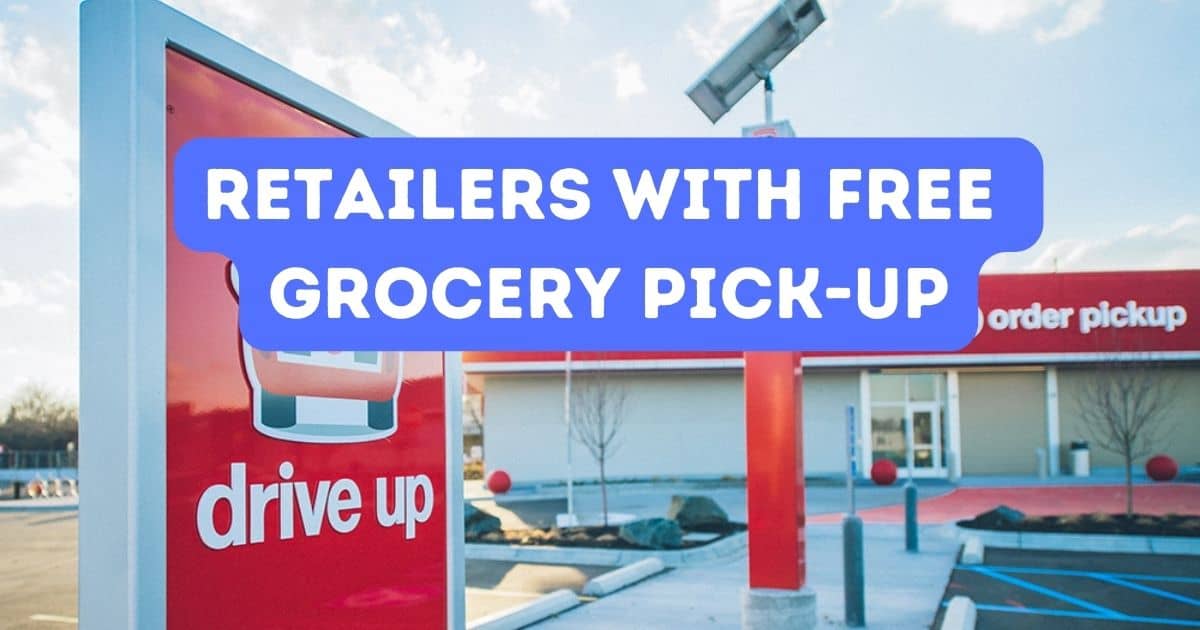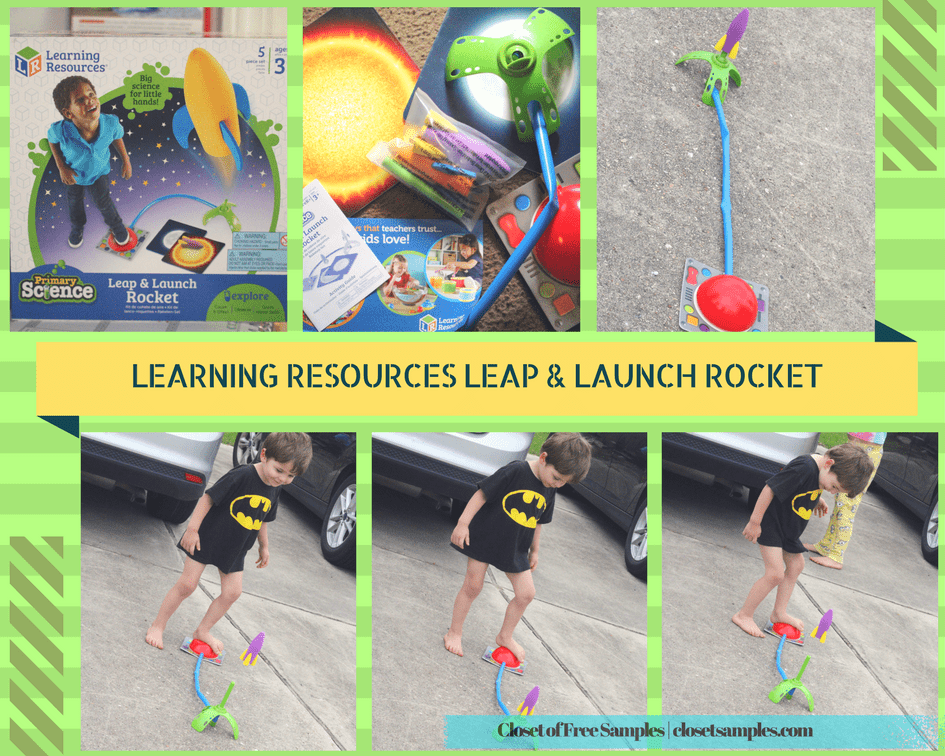Are you eager to cultivate a lush garden without emptying your wallet? Gardening can be an incredibly fulfilling hobby, but expenses can add up quickly. However, don't fret – it's entirely possible to have a thriving garden without spending a dime. In this article, we'll explore the art of gardening on a budget, offering you invaluable insights and tips to create a beautiful garden without breaking the bank.
Gardening is not only a therapeutic and rewarding activity, but it can also enhance the beauty of your surroundings. However, many are deterred by the costs associated with it. Fear not, as we delve into the world of frugal gardening and reveal how you can make your garden bloom without burning a hole in your pocket.
 Image credit: Pexels
Image credit: Pexels
How to Garden for FREE
In this section, we'll discuss various techniques and strategies for creating and maintaining a garden without any significant financial investment.
Scouting Free Seeds and Plants
Planting from seeds or cuttings is a cost-effective way to kickstart your garden. Look for local seed swaps or community gardens where you can find free plants, seeds, and cuttings. Embrace the sharing spirit and contribute to your local gardening community. Here's how you can do it:
Local Seed Swaps: Attend seed swap events or join online forums where gardeners exchange seeds. You can offer your surplus seeds in exchange for varieties you need.
Community Gardens: Many communities have shared gardening spaces where you can find free plants, seeds, and cuttings. Participate in community gardening activities and contribute to the collective seed and plant pool.
Neighborhood Networks: Reach out to friends, neighbors, and fellow gardeners in your area. They may have extra seeds or plants they're willing to share or trade.
Online Gardening Communities: Join online gardening communities or social media groups dedicated to gardening. People often offer free seeds and plants to fellow members.
Public Events: Keep an eye out for gardening events in your area, such as plant swaps or garden cleanups. These events often provide opportunities to acquire free seeds and plants while connecting with other gardeners.
Farmers Markets: Some farmers markets host seed swap days or have booths where gardeners can trade seeds.
Public Libraries: Check with your local library, as they may organize seed swap events or have seed libraries where you can borrow seeds for free.
By leveraging these resources, you can acquire a variety of seeds and plants for your garden without spending any money. Remember to reciprocate by sharing your own surplus seeds and plants with others in your gardening community.
Composting Magic
Good soil is essential for a thriving garden, and you can create nutrient-rich compost for free. Collect kitchen scraps, fallen leaves, and yard waste to make your compost. Composting not only enriches your soil but also reduces waste. Here's how you can do it:
1) Collect Organic Waste: Start by collecting organic waste from your kitchen, including fruit and vegetable scraps, coffee grounds, tea bags, eggshells, and non-greasy food scraps. Avoid adding meat, dairy, and oily foods, as they can attract pests and create odors.
2) Gather Yard Waste: Collect yard waste such as grass clippings, leaves, small twigs, and plant trimmings. These materials provide essential carbon for the composting process.
3) Layering Materials: Alternate layers of green (nitrogen-rich) and brown (carbon-rich) materials in your compost bin or pile. Green materials include kitchen scraps and fresh yard waste, while brown materials include dried leaves, newspaper, and cardboard.
4) Add Water: Keep your compost pile moist, like a damp sponge. Watering the pile occasionally helps maintain the right level of moisture for decomposition. However, avoid overwatering, as it can lead to anaerobic conditions and unpleasant odors.
5) Aerate the Pile: Regularly turn or mix the compost pile to provide oxygen to the microorganisms responsible for decomposition. This helps speed up the composting process and prevents foul odors.
6) Patience and Monitoring: Composting is a natural process that takes time. Depending on environmental conditions and the materials used, it can take several months to a year for compost to fully mature. Monitor the pile's temperature, moisture level, and odor to ensure it's composting properly.
7) Harvesting Compost: Once the compost has turned dark, crumbly, and earthy-smelling, it's ready to use in your garden. Remove any large, undecomposed materials, and then apply the compost to your garden beds as a soil amendment or mulch.
By following these steps, you can create nutrient-rich compost from organic waste and yard materials, enriching your garden soil and promoting healthy plant growth—all without spending a penny.
Recycling Containers
Don't rush to buy expensive planters. Repurpose old containers like buckets, milk jugs, or wooden crates to grow your plants. This not only saves money but also adds a unique, rustic charm to your garden. Here's how you can do it:
- Clean and Prepare the Containers: Start by cleaning the containers thoroughly to remove any dirt, debris, or residues. Ensure that they are free from any harmful chemicals or contaminants that could affect your plants.
- Drainage Holes: If the containers don't already have drainage holes, make several holes in the bottom to allow excess water to drain out. This prevents waterlogging, which can lead to root rot and other issues.
- Choose Suitable Plants: Select plants that are appropriate for the size and depth of the containers. Consider the sunlight requirements, water needs, and mature size of the plants before planting.
- Fill with Potting Mix: Fill the containers with a high-quality potting mix, preferably one specifically formulated for container gardening. Ensure that the soil is loose, well-draining, and nutrient-rich to support healthy plant growth.
- Planting: Plant your chosen plants in the containers, ensuring they are positioned at the appropriate depth and spacing. Gently pat down the soil around the roots and water thoroughly.
- Maintenance: Regularly water and fertilize your plants according to their specific needs. Monitor the containers for any signs of pests, diseases, or nutrient deficiencies, and take appropriate action if necessary.
- Placement: Place the containers in a location that receives adequate sunlight for the plants' requirements. Consider factors such as wind exposure and temperature fluctuations when deciding on the placement.
- Creative Display: Get creative with how you arrange and display your repurposed containers. You can group them together to create a container garden, hang them from hooks or railings, or place them on shelves or stands for vertical gardening.
By repurposing old containers, you not only reduce waste but also create unique and environmentally friendly planters for your garden. Whether you're growing flowers, herbs, or vegetables, repurposed containers can add character and charm to your outdoor space while providing a home for your plants to thrive.
Rainwater Harvesting
Save on your water bill by collecting rainwater. Set up a simple rain barrel system to gather and store rainwater for your garden. It's eco-friendly and budget-friendly. Here's how you can collect rainwater effectively:
- Choose a Collection Method: Decide on the method of rainwater collection that best suits your needs and space. You can use rain barrels, rainwater harvesting systems, or even simple containers like buckets and barrels.
- Position Your Collection Container: Place your collection container under a downspout or in an area where rainwater naturally accumulates, such as near a sloping roof or gutter.
- Install a Rain Barrel: If using a rain barrel, ensure it is equipped with a secure lid to prevent debris, insects, and mosquitoes from entering. Install a mesh screen over the inlet to filter out leaves and other larger particles.
- Divert Downspouts: Direct your downspouts towards your collection container to maximize rainwater capture. You can use downspout extensions or diverters to channel rainwater into your collection system.
- Secure Your Collection System: Ensure your collection system is stable and secure, especially if using multiple barrels or a larger rainwater harvesting system. Consider using a platform or stand to elevate your barrels for easy access.
- Regular Maintenance: Keep your collection container clean and free from debris to prevent clogging and contamination. Check for leaks, cracks, or damage periodically and repair or replace as needed.
- Use Rainwater Wisely: Use collected rainwater for watering your garden, lawn, and outdoor plants. You can also use it for washing vehicles, outdoor cleaning, and other non-potable water needs.
- Conserve During Dry Spells: During extended dry periods, conserve your stored rainwater by reducing outdoor water usage and prioritizing watering for essential plants.
By collecting rainwater, you can take advantage of nature's free and abundant resource to nourish your garden and reduce your environmental impact. It's a simple yet effective way to promote sustainability and self-sufficiency in your home and garden.
DIY Fertilizers
Create your own fertilizers from household items like eggshells, coffee grounds, and banana peels. These organic alternatives nourish your plants and save you money. Here's how you can do it:
- Collect Organic Materials: Save eggshells, coffee grounds, banana peels, and other organic kitchen waste instead of throwing them away. These items are rich in nutrients that plants need to thrive.
- Prepare the Materials: Rinse eggshells thoroughly to remove any residue and allow them to air dry. Tear banana peels into smaller pieces for faster decomposition. Coffee grounds can be used as is.
- Crush Eggshells: Once dry, crush eggshells into small pieces or grind them into a fine powder using a blender or mortar and pestle. This helps speed up the decomposition process and makes it easier for plants to absorb the nutrients.
- Compost or Bury: Add the crushed eggshells, banana peels, and coffee grounds to your compost pile or bury them directly in the soil around your plants. Ensure that they are buried a few inches deep to prevent attracting pests.
- Mix into Soil: Alternatively, you can mix the organic materials directly into the soil of your garden beds or plant containers. This provides a slow-release source of nutrients as the materials break down over time.
- Water Thoroughly: After adding the organic fertilizers to the soil, water your plants thoroughly to help initiate the decomposition process and distribute the nutrients evenly.
- Monitor and Repeat: Monitor the health and growth of your plants regularly. If you notice any signs of nutrient deficiency, such as yellowing leaves or stunted growth, consider adding more organic fertilizers as needed.
- Rotate Materials: Rotate the types of organic materials you use as fertilizers to provide a balanced mix of nutrients to your plants. You can also incorporate other kitchen scraps like vegetable peelings and coffee filters into your compost or soil.
By creating your own fertilizers from household items, you not only reduce waste but also provide your plants with essential nutrients in a natural and sustainable way. It's a simple yet effective way to promote healthy growth and productivity in your garden.
Natural Pest Control
Keep your garden pest-free without resorting to expensive pesticides. Introduce beneficial insects, like ladybugs and lacewings, or use companion planting to deter pests naturally. Here's how you can do it:
Purchase Beneficial Insects: Many garden supply stores and online retailers offer beneficial insects such as
ladybugs,
lacewings, and predatory mites for purchase. You can buy them in bulk and release them into your garden.
Release Beneficial Insects: Follow the instructions provided with the purchased beneficial insects for the best results. Release them in the early morning or late afternoon when temperatures are cooler and the insects are less active.
Provide Habitat: Create an inviting habitat for beneficial insects by incorporating native plants, flowering herbs, and shrubs into your garden. These plants provide food and shelter for beneficial insects, encouraging them to stay and establish populations.
Avoid Pesticides: Minimize or eliminate the use of chemical pesticides in your garden, as they can harm both harmful and beneficial insects. Opt for organic pest control methods instead, such as beneficial insects and companion planting.
Use Companion Planting: Companion planting involves strategically planting certain crops together to maximize their growth and deter pests naturally. Some plants emit odors or chemicals that repel pests, while others attract beneficial insects that prey on pests.
Research Companion Plants: Identify plants that are known to repel common garden pests or attract beneficial insects. For example, marigolds, nasturtiums, and basil are often used to deter pests, while plants like dill, fennel, and yarrow attract beneficial insects like ladybugs and lacewings.
Plan Your Garden Layout: Design your garden layout with companion planting in mind, placing compatible plants together to create a harmonious ecosystem. Consider interplanting rows of vegetables with rows of companion plants or incorporating companion plants around the perimeter of your garden beds.
Monitor and Adjust: Regularly monitor your garden for signs of pest activity and beneficial insect populations. If you notice an increase in pest numbers, consider releasing more beneficial insects or adjusting your companion planting strategy accordingly.
By incorporating beneficial insects and companion planting into your garden, you can effectively control pests while promoting a healthy and balanced ecosystem. These natural pest control methods are environmentally friendly and sustainable, providing long-term benefits for both your garden and the environment.
Thrift Store Garden Tools
Why buy new garden tools when you can find gently used ones at thrift stores? Scour second-hand shops for gardening equipment that won't break the bank. Here's how you can do it:
Visit Local Thrift Stores: Explore thrift stores, charity shops, and resale outlets in your area. These establishments often carry a variety of gardening tools and equipment at budget-friendly prices.
Check Online Marketplaces: Browse online marketplaces like eBay, Craigslist, and Facebook Marketplace for pre-owned gardening equipment. You can find gently used items at discounted prices, often with the convenience of home delivery.
Attend Garage Sales: Keep an eye out for garage sales, yard sales, and estate sales in your neighborhood. These events can be treasure troves for finding gardening tools and equipment at bargain prices.
Explore Flea Markets: Visit flea markets and swap meets where vendors sell a diverse range of items, including gardening supplies. You may stumble upon unique and affordable finds while supporting local sellers.
Join Community Exchange Groups: Join local community exchange groups or online forums where members offer or trade items for free or at minimal cost. You can post requests for specific gardening equipment and connect with fellow gardeners in your area.
Inspect Items Carefully: When browsing second-hand shops, carefully inspect gardening equipment for signs of wear, damage, or rust. Test tools like shovels, hoes, and pruners to ensure they are in good working condition.
Negotiate Prices: Don't be afraid to negotiate prices with sellers, especially at garage sales and flea markets. Be respectful and courteous, but don't hesitate to make a reasonable offer if you believe the asking price is too high.
Ask About Returns: Inquire about the return policy or warranty for second-hand gardening equipment, especially if purchasing from a thrift store or resale outlet. Some stores may offer limited return or exchange options for used items.
By scouring second-hand shops for gardening equipment, you can find quality tools and supplies at affordable prices, allowing you to pursue your gardening passion without breaking the bank. Plus, repurposing pre-owned items is environmentally friendly and reduces waste, making it a win-win situation for both your wallet and the planet.
 Image credit: Pexels
Image credit: Pexels
Where to find free gardening supplies
Finding free gardening supplies can significantly reduce the cost of your gardening endeavors. Here are some tips on where to find these supplies for free:
Community Gardens: Many communities have shared gardening spaces where you can often find free seeds, plants, and even tools. Check with your local community center or online gardening forums to locate these resources.
City or Parish Government: Some areas offer free seeds, mulch, or compost programs to residents. Call your local Estelle government offices to see if they have such a program.
Newspaper: Ask stores that sell newspapers if you can take yesterday's leftover papers. Use them for weed control or mulch.
Leaves: Fallen leaves can be saved for mulch in summer or used as fall mulch. Ask your neighbors or collect them from your yard.
Seed saving: Save seeds from organic produce you buy to plant next season.
Recyclables: Use containers like yogurt cups or milk jugs to start seedlings.
Compost: If you have a yard, consider composting food scraps and yard waste to create free fertilizer.
Seed Swaps: Join seed swap events or forums where gardeners exchange seeds. This is a fantastic way to diversify your garden without spending a dime.
Friends and Neighbors: Your friends and neighbors may have surplus gardening supplies they're willing to share. Don't hesitate to ask them if they have extra seeds, plants, or tools.
Online Gardening Communities: There are numerous online gardening communities and social media groups where gardeners share their excess supplies. Websites like Freecycle and Craigslist often have listings for free gardening items.
Local Freecycle or Buy Nothing Groups: These local groups are dedicated to sharing items for free within your community. You can find gardening supplies posted by neighbors looking to declutter.
Public Yard Sales: Keep an eye out for yard sales and garage sales. You might come across people selling gardening tools and plants at a fraction of the cost or even giving them away for free.
Composting Centers: Some cities have composting centers where they offer free compost to residents. This rich soil amendment can significantly benefit your garden.
Garden Cleanup Events: Join local garden cleanup events or neighborhood beautification projects. These events often provide free plants and gardening supplies to participants.
Local Agricultural Extension Offices: Contact your local agricultural extension office for information on gardening workshops and events where you might receive free supplies.
Online Classifieds: Check online classified ad websites like Craigslist, Facebook Marketplace, or Gumtree. People often give away gardening supplies they no longer need.
DIY: Building Supplies: If you're looking to build raised beds or other garden structures, consider repurposing wood or materials from old furniture or construction sites. These can often be obtained for free or at a minimal cost.
Remember that gardening communities and networks can be incredibly supportive and generous. Always be willing to reciprocate by sharing your surplus items or knowledge with others. Gardening is not just about plants; it's also about nurturing a sense of community.
 Image credit: Pexels
Image credit: Pexels
FAQs
Is it possible to have a beautiful garden for free?
Absolutely! By following the tips in this article, you can create a stunning garden without spending a fortune.
What are some creative ways to repurpose items for gardening?
You can use old containers, like buckets and crates, as planters, and repurpose various household items as garden tools.
How can I ensure my garden stays healthy without expensive fertilizers?
Homemade fertilizers using kitchen scraps, coffee grounds, and eggshells are fantastic and cost-effective alternatives.
Are there any natural methods to keep pests away from my garden?
Yes, you can use companion planting and beneficial insects to ward off pests without costly pesticides.
Where can I find free seeds and plants for my garden?
Look for local seed swaps or community gardens in your area, where you can obtain seeds, cuttings, and plants for free.
How do I start rainwater harvesting for my garden?
Set up a rain barrel system to collect and store rainwater for your garden. It's an eco-friendly and budget-friendly solution.

Image credit: Pexels
Conclusion
Gardening for free is not only achievable but also immensely satisfying. By following the techniques outlined in this article, you can watch your garden flourish without draining your wallet. Remember, a beautiful garden is within reach for everyone, no matter their budget. Get your hands dirty and enjoy the rewards of your labor – and your thriving, budget-friendly garden.
If you like Amazon deals & coupon codes join my Telegram Channel (It's FREE!)! Sign up here!
═════════════════════════════════
PROMOTE YOUR BRAND WITH US!
═════════════════════════════════
═════════════════════════════════
FOLLOW CFS ON SOCIAL MEDIA
═════════════════════════════════
|

 Image credit: Pexels
Image credit: Pexels
 Image credit: Pexels
Image credit: Pexels Image credit: Pexels
Image credit: Pexels



 Here you will find all the best coupon advice, tips and how to make the most of all your coupons!
Here you will find all the best coupon advice, tips and how to make the most of all your coupons! Are you looking for ways to stretch your dollar?
Are you looking for ways to stretch your dollar? 


















































































